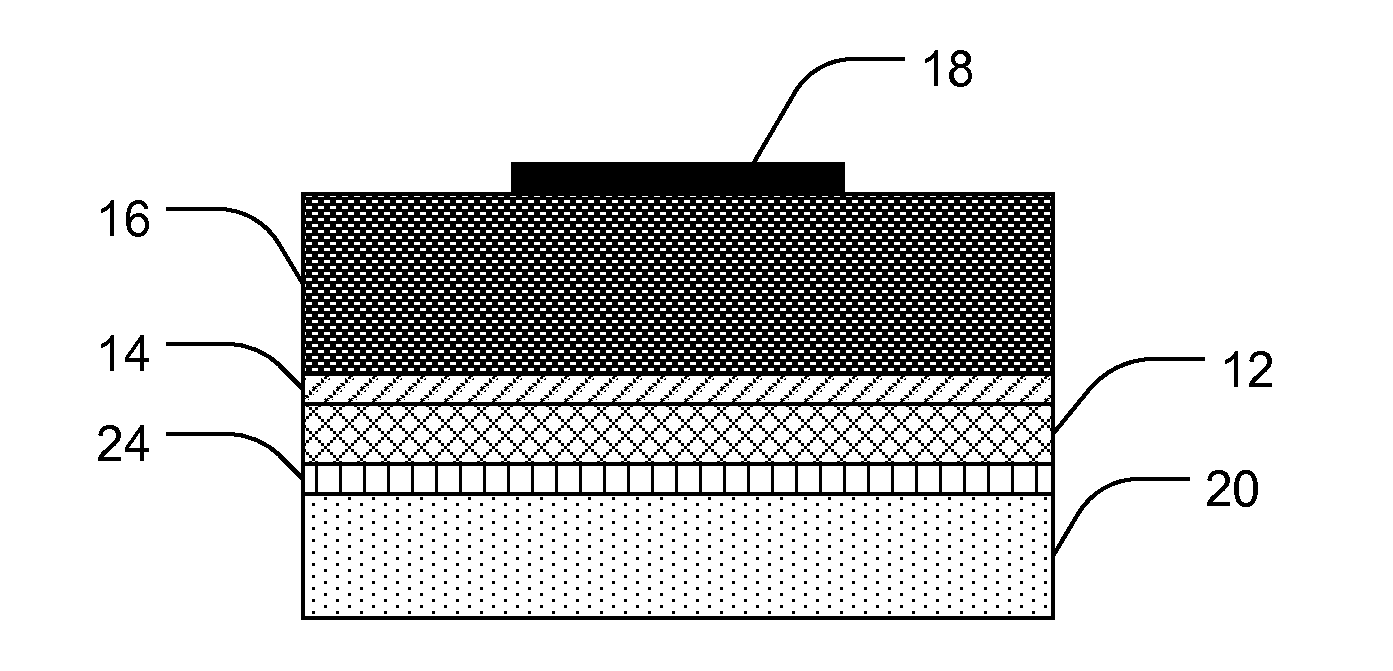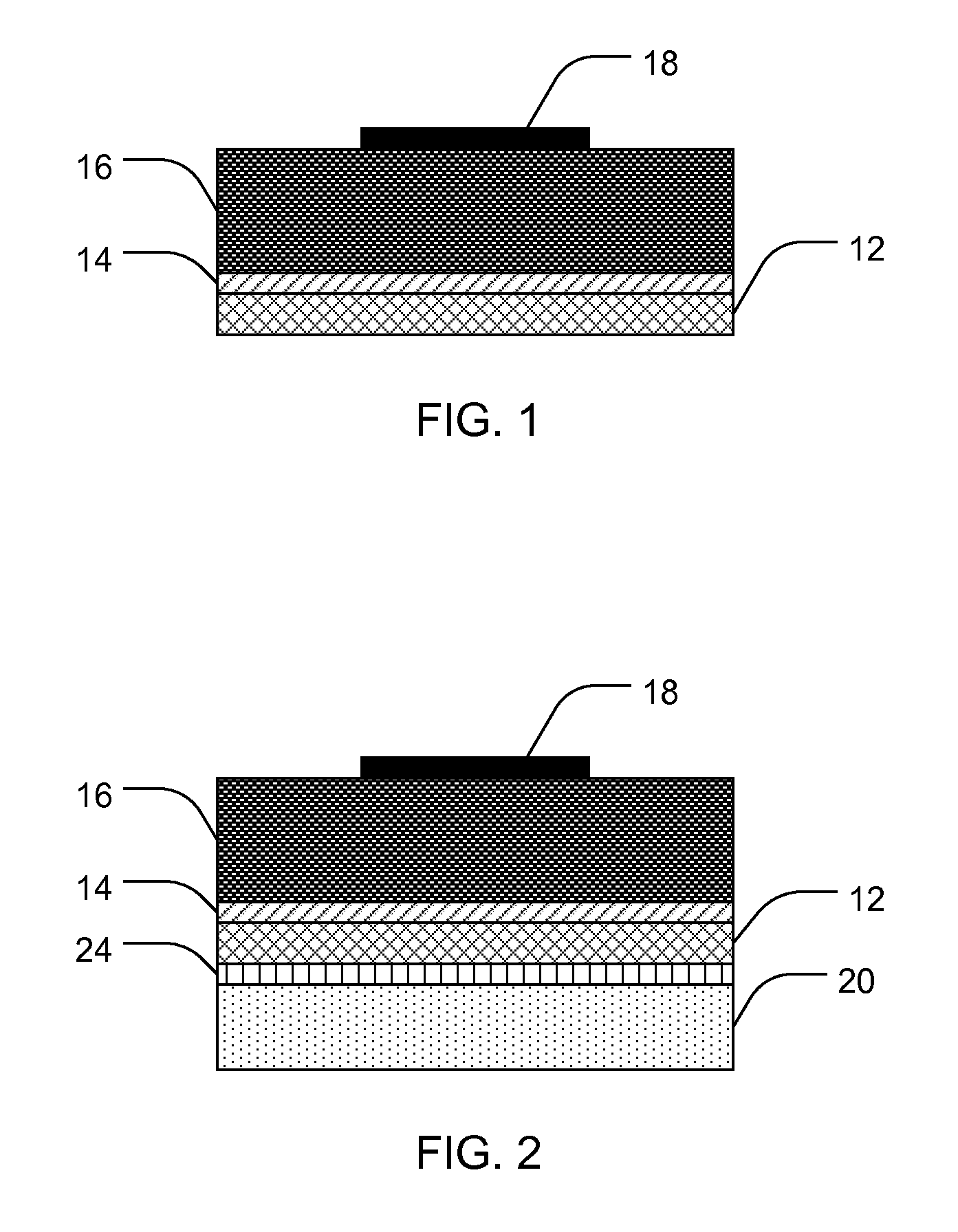Diamond LED devices and associated methods
- Summary
- Abstract
- Description
- Claims
- Application Information
AI Technical Summary
Benefits of technology
Problems solved by technology
Method used
Image
Examples
example 1
[0077]A semiconductor substrate may be formed as follows:
[0078]A single crystal Si wafer is obtained and cleaned by soaking in KOH and ultrasound cleaning with distilled water to remove any non-crystalline Si and foreign debris. A conformal amorphous carbon coating is applied to the cleaned surface of the Si wafer by exposing the wafer to CVD deposition conditions without an applied bias. Following carbonization of the surface, amorphous diamond is deposited for approximately 30 minutes at 800° in 1% CH4 and 99% H2. The amorphous carbon coating is then removed with H2 or F2 treatment for about 60 minutes, at 900°. Removal of the amorphous carbon coating exposes an epitaxial SiC layer that has formed in situ between the Si wafer and the amorphous carbon coating. The thickness of the SiC layer is approximately 10 nm.
[0079]A transparent diamond coating 10 microns thick is then deposited onto the SiC layer by CVD deposition of CH4 for approximately 10 hours. After 10 hours, the CH4 sour...
example 2
[0081]An LED device may be constructed as follows:
[0082]A semiconductor substrate is obtained as in Example 1. GaN semiconductor layers are deposited onto the exposed SiC layer by MOCVD with GaH3 and NH3 source materials.
PUM
 Login to View More
Login to View More Abstract
Description
Claims
Application Information
 Login to View More
Login to View More - R&D
- Intellectual Property
- Life Sciences
- Materials
- Tech Scout
- Unparalleled Data Quality
- Higher Quality Content
- 60% Fewer Hallucinations
Browse by: Latest US Patents, China's latest patents, Technical Efficacy Thesaurus, Application Domain, Technology Topic, Popular Technical Reports.
© 2025 PatSnap. All rights reserved.Legal|Privacy policy|Modern Slavery Act Transparency Statement|Sitemap|About US| Contact US: help@patsnap.com



